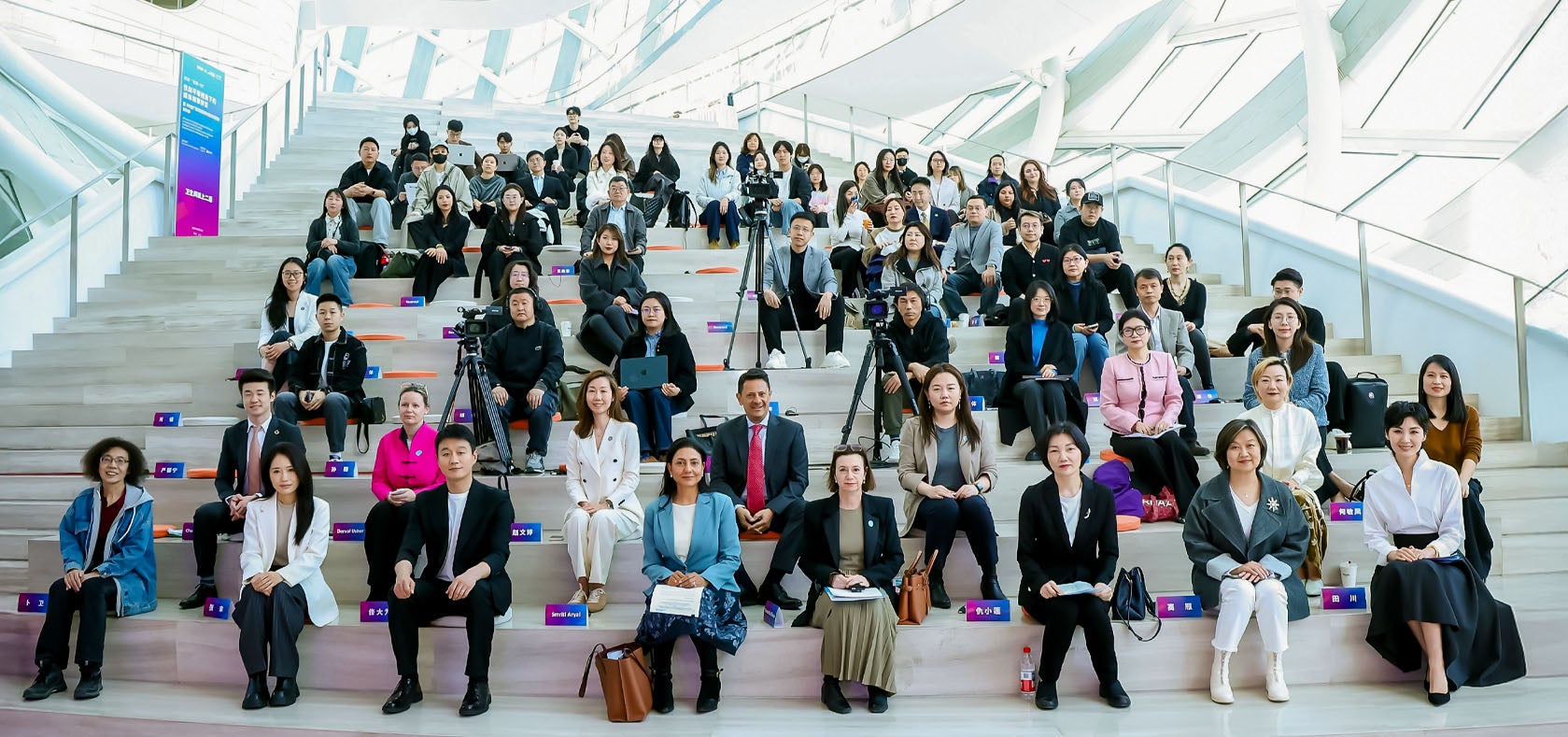English | 中文
Beijing, China — Commemorating the thirtieth anniversary of the Beijing Declaration and Platform for Action (Beijing+30), UN Women and UNICEF have launched a new report, Content Analysis of Gender Representation in Advertising in China. The report examines how advertising portrays women, men, girls and boys, and the impact of this on children’s perceptions and aspirations.
“2025 marks a turning point—30 years since the Beijing Declaration and just five years before the deadline to achieve the Sustainable Development Goals,” said UN Women China Country Representative Smriti Aryal. “As leaders and representatives of media and respective industries, we wield immense power to show positive representation of women and girls in non-stereotyped way, to use gender-responsive language to combat misinformation, discrimination, and hate speech, and to celebrate women’s achievements, amplify their voices, and advocate for their rights. ”
The report analyzed 1,000 of the most played TV, internet and social media advertisements in China in 2022. Key findings revealed that women are less prominently featured than men, more often depicted with slim bodies, and often shown in domestic and caregiving roles. In contrast, men are more likely to be portrayed in paid occupations and leadership positions. The report recommends that advertisers and content creators craft more inclusive narratives that reflect the full potential of girls and boys.
“At UNICEF, we believe in the potential of advertising to be a force for good,” UNICEF China Deputy Representative Amanda Bissex said. “Advertising is not only a source of inspiration and information but also has the power to shape how children view their values, dreams and self-worth. Portraying women and girls in leadership roles can inspire young minds to challenge barriers, while showing fathers as engaged caregivers can redefine outdated norms and encourage new ways to think about division of responsibilities in a family.”
By adopting the report’s recommendations, advertisers can create positive narratives that help children realize their full potential. Addressing biases like narrow beauty standards or the underrepresentation of men in caregiving roles not only fosters inclusivity but also empowers girls and boys to envision a future unconstrained by stereotypes.
This report highlights that gender stereotypes persist in others, shaping perceptions and reinforcing inequalities. For example:
- in beauty, clothing and appearance advertisements, female characters are 10.5 times more likely than male characters to wear sexually revealing clothing
- female characters are nine times more likely than males to be shown cleaning, while male characters are 1.5 times more likely than females to be shown to have a paid occupation and almost twice as likely to be shown as leaders.
The report also identified some areas of positive gender portrayals. For example, there is equal representation of women and men in Science, Technology, Engineering, and Mathematics (STEM) professions and young characters in school settings. However, real-world statistics show women and girls remain underrepresented in STEM fields despite equal early academic performance. This gap emphasizes the need to build on advertising’s positive portrayals to address broader societal barriers for women and girls in STEM.
The report offers a series of recommendations for improving gender equality in advertising. These include:
- develop content that positions women and girls as leaders and challenges harmful stereotypes and beliefs around violence against women and girls
- strengthening advertising organizations’ capacity to create non-stereotyped, balanced and diverse images of women
- reinforce accountability through legislations, measures and self-monitoring and regulatory mechanisms
- increase women and girls’ expression and participation in decision-making in advertising
- develop partnerships and collaborations with gender-equality organisations to improve the quality of advertising content.
The report was launched on 20 March at an event in Beijing, which brought together representatives from UN agencies, government, enterprises, media platforms, creative agencies, academia, NGOs, influencers and young people.
Continuing the historic Beijing+30 momentum, the report also contributes to the broader goals of United Nations Sustainable Cooperation Framework for China (2021-2025) and the Outline of Women’s Development in China (2021-2030).
At the launch, UN Women and UNICEF reaffirmed their commitment to working with partners in media and advertising to accelerate collective efforts toward advancing gender equality and women’s and girls’ empowerment, depicting a more equal and inclusive world.
To download the full report, please click:
UN Women Unicef
About UN Women
UN Women is the United Nations entity dedicated to gender equality and women’s empowerment. A global champion for women and girls, UN Women works to develop and uphold standards and create an environment in which every woman and girl can exercise her human rights and live up to her full potential. We are trusted partners for advocates and decision-makers from all walks of life, and a leader in the effort to achieve gender equality.
About UNICEF
UNICEF, the United Nations agency for children, works to protect the rights of every child, everywhere, especially the most disadvantaged children and in the toughest places to reach. Across more than 190 countries and territories, we do whatever it takes to help children survive, thrive, and fulfil their potential.
For more information
Please contact:
- Zhao Wenting
Communications Specialist, UN Women China
Tel: 010 58325605 | Email: [ Click to reveal ]
- Liu Li
Communication Specialist, UNICEF China
Tel: +86-10-85312612 | Email: liliu@unicef.org

